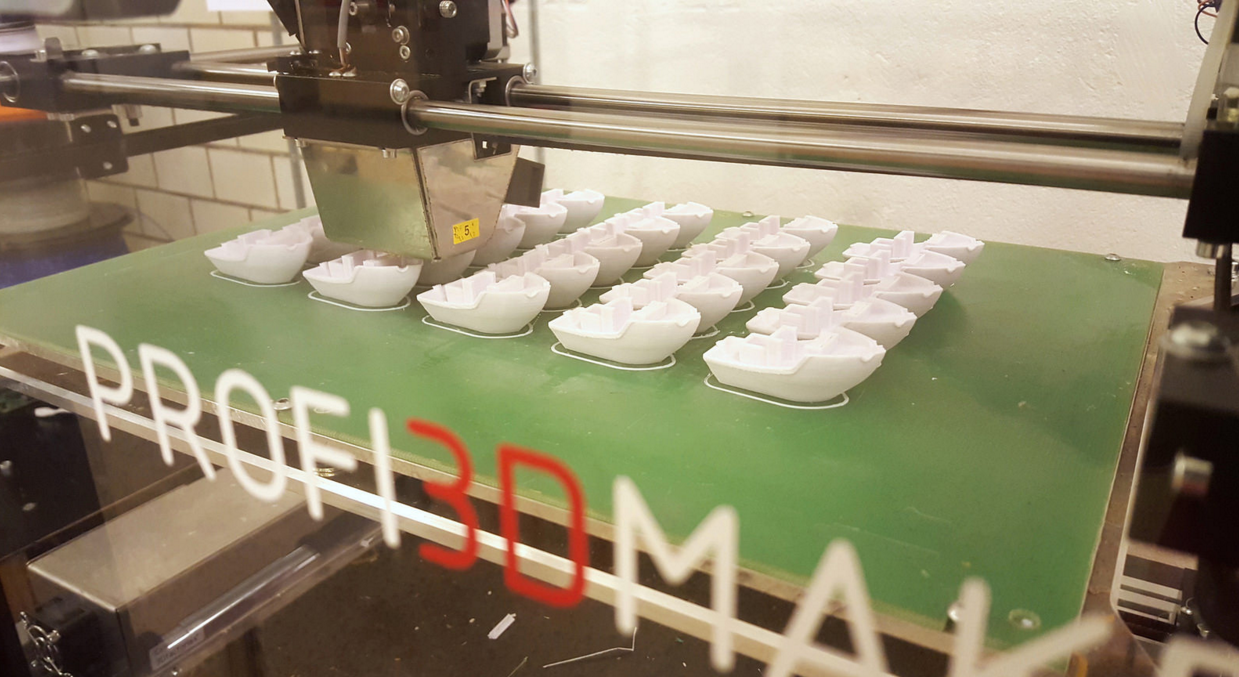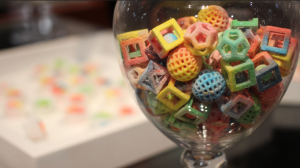You’ll be hard pressed to find an industry that won’t be impacted or influenced by 3D printing in the coming decade. Every sector of the economy will feel the positive reverberations of this evolving technology and we’ll one day look back and wonder in amazement at how processes were handled in a pre-3D world. And while virtually all industries will be impacted, few will be changed quite like mass manufacturing.
Improving Modern Manufacturing
“Mass production is the biggest challenge in 3D printing,” tech writer Lyndsey Gilpin claims, “but with the adoption of large-scale printers and rapidly evolving technology to produce parts faster, the printers will completely disrupt traditional manufacturing in many industries.” The question is: How quickly will 3D printing change mass manufacturing and which industries in particular will be impacted the most?
According to data from CCS Insights, approximately 158,000 3D printers were sold in the global market in 2014. By 2018, that number is expected to balloon to 845,000. That growth could represent a swing from $1.6 billion in revenue to $4.8 billion. Approximately 49 percent of the global revenue will come from North America and 3D printers will become increasingly commonplace in both the private sector and business world.
 Specific Impact of 3D Printing on Manufacturing
Specific Impact of 3D Printing on Manufacturing
With the influx of 3D printers in the marketplace, it’s obvious that an impact will be felt. The question is how and where? Let’s look at a handful of examples and predictions of how 3D printing will intersect with modern manufacturing.
- Replacement parts. One of the best things about 3D printing is that the technology gives you the ability to print custom designs. This is extremely valuable when it comes to replacing parts on existing products. From the military printing custom parts for trucks and tanks to businesses quickly fixing tiny parts for a machine, the ability to quickly manufacture replacement parts will be valuable.
- Healthcare. You could argue that no industry has as much potential as healthcare. There are already plenty of stories about 3D printing being used to print things like prosthetic devices, surgical models, and even living tissue. However, there’s still the education of customers and ethical issues to sort through before 3D printing completely permeates modern healthcare, but the potential is certainly there.
- Retail. There’s a strong desire among modern shoppers to customize the products they purchase. Over the next few years, Bryan Oknyansky, a lecturer at Regent’s University London, believes 3D printing will challenge the traditional mass-manufacturing model. “Whereas contemporary manufacturing models require scale and standardised design to produce high volumes of products, the new manufacturer is poised for one-off or small-batch production, depending on which 3D-printing technology is used,” he says. The result will be more customization in the products we purchase.
 Food. Don’t look now, but even 3D printing food is a possibility. It’s certainly a strange application and will take years and years of consumer education and technological advancements to perfect, but the fact that this is a plausible application goes to show how disrupting 3D printing could be in the modern marketplace.
Food. Don’t look now, but even 3D printing food is a possibility. It’s certainly a strange application and will take years and years of consumer education and technological advancements to perfect, but the fact that this is a plausible application goes to show how disrupting 3D printing could be in the modern marketplace.- Lower impact. Environmentally conscious people are excited about the impact – or lack thereof – 3D printing will have on the environment. Whereas traditional manufacturing is dirty and wasteful, 3D printing is clean and precise. As Gilpin points out, there are fewer wasted materials, less product transport, fewer unsold products, and the possibility of longer life spans.
It’s difficult to predict the exact impact 3D printing will have on mass manufacturing. However, one thing is clear. This will be an influential technology in the coming years. While a number of industries will see positive change, few will undergo as many drastic shifts and evolutions as manufacturing.
Larry Alton is a professional blogger, writer and researcher who contributes to a number of reputable online media outlets and news sources. A graduate of Des Moines University, he still lives in Iowa as a full-time freelance writer and avid news hound. His works have appeared on HuffingtonPost.com, Entrepreneur.com, and Business.com.
[Image credits: https://flic.kr/p/yDYSN9 ; https://flic.kr/p/qKYair ; https://flic.kr/p/rG4eg5]
Subscribe to Our Email Newsletter
Stay up-to-date on all the latest news from the 3D printing industry and receive information and offers from third party vendors.
You May Also Like
3D Printing News Unpeeled: A $3000 SLS System, Construction Subsidies and Parameters
The Housing Affordability Crisis is one of Canadian President Trudeau’s biggest issues. Now the government has made subsidies available, including scaling new technologies, 3D printed housing and libraries of reapproved...
“Bundled Light” Enables High Quality Plastic 3D Printing from LEAM
Naturally, we expect current 3D printing methods to continuously improve, but it continues to do so in the most surprising ways. The latest development comes from LEAM, a startup spun...
Each to Their Own: Exploring Creality’s Latest Ender Trio as the Company Strengthens Its Commitment to 3D Printing Advocacy
Creality has reaffirmed its commitment to promoting 3D printing. The launch of the Ender-3 V3 SE, Ender-3 V3 KE, and Ender-3 V3 showcases the company’s dedication to catering to diverse...
3D Printing News Briefs, March 23, 2024: AM in the US Coast Guard, Navy, & More
In today’s 3D Printing News Briefs, we’re discussing the use of 3D printing in various branches of the military, including the U.S. Coast Guard, the U.S. Navy, and the German...































